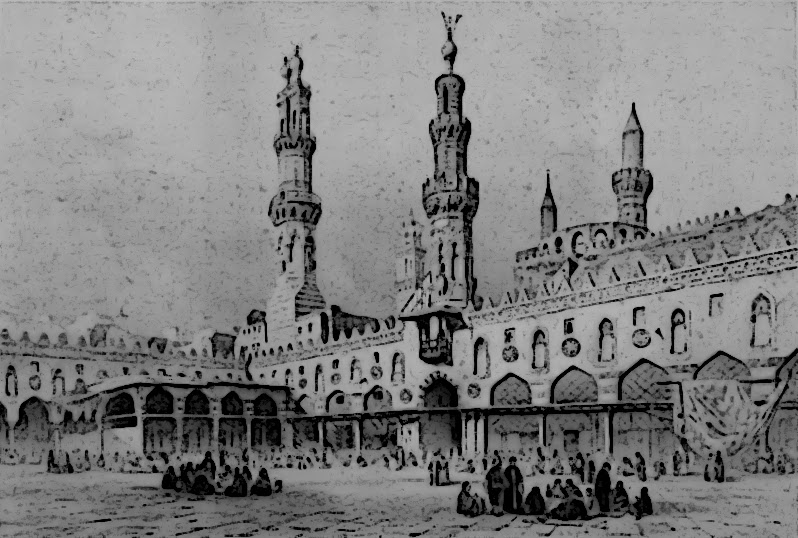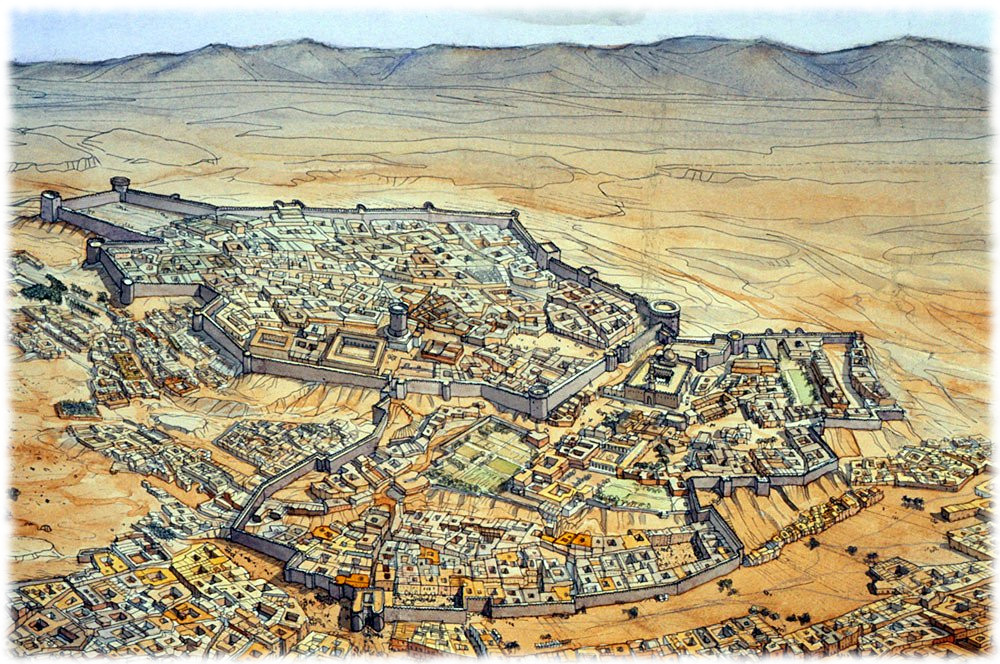Difference between revisions of "Cairo -- medieval"
(→Banu al - Hajji (سبط حجي) -- Muslim Nosferatu) |
(→Cainites of Lesser Blood) |
||
| Line 436: | Line 436: | ||
<br> | <br> | ||
---- | ---- | ||
| + | === <span style="color:#800000;">'''Shadows in Dust -- The Hidden Host''' === | ||
| + | * -- <span style="color:#800000;"> [[Angelique]] -- Guardian of the Necropoli. | ||
| + | * <span style="color:#800000;"> -- [[]] -- | ||
| + | * <span style="color:#800000;"> -- [[Maiden of Plagues]] -- The mysterious Sleeping Lord of the Cairene Court of Dreams. | ||
| + | * <span style="color:#800000;"> -- [[]] -- | ||
| + | * <span style="color:#800000;"> -- [[]] -- | ||
== '''Websites''' == | == '''Websites''' == | ||
Revision as of 23:07, 2 February 2018
Contents
- 1 Quote (استشهد)
- 2 Admonition (تحذير)
- 3 Appearance (مظهر)
- 4 Climate
- 5 Economy
- 6 History of the City Triumphant
- 7 Districts of Al-Qāhirah
- 8 Population
- 9 Cemeteries
- 10 Citizens of the City
- 11 Fortifications
- 12 Holy Ground
- 13 Inns
- 14 Law & Lawlessness
- 15 Monuments
- 16 Private Residences
- 17 Taverns
- 18 Temples
- 19 Visitors
- 20 Whore Houses
- 21 Dead Among the Dead -- The Damned of Cairo (القتلى من بين الأموات - وملعون من القاهرة)
- 21.1 Banu Yashkur (سبط هيل) -- Assamites of Egypt
- 21.2 Banu Ahl ar-Raya (قبيلة من رمال الزمن) -- The Cold Brujah
- 21.3 Qabilat Al-Mawt (قبيلة الموت) -- The Cappadocians of Cairo
- 21.4 Banu al as-Sa'idi (قبيلة من المصلين الثعبان) -- Followers of Set
- 21.5 Banu al - Lam'a (قبيلة من الليل) -- Lasombra
- 21.6 Banu al - Hajji (سبط حجي) -- Muslim Nosferatu
- 21.7 Ventrue: Antonii cum Sanguine
- 21.8 Laibon (أبو الهول) -- The Sphinx of Cairo
- 21.9 Cainites of Lesser Blood
- 21.10 Shadows in Dust -- The Hidden Host
- 22 Websites
Quote (استشهد)
Mistress of broad provinces and fruitful lands, boundless in profusion
of buildings, peerless in beauty and splendor, she shelters all you will of the
learned and ignorant, the grave and the gay, the prudent and the foolish,
the noble and the base...like the waves of the sea she surges with her throngs
of folk...her youth is ever new despite the length of days. Her reigning star
never shifts from the mansion of fortune. (sic)
- -- Ibn Batuta, Rihla (The Journey)
- -- Ibn Batuta, Rihla (The Journey)
Admonition (تحذير)
Older than time itself, Cairo sits as a gleaming gem amid
the Egyptian sands. But is its glitter a beacon of hope or the
harbinger of something more terrible?
Appearance (مظهر)
Climate
Economy
History of the City Triumphant
Sins of the Fathers: A Secret History of Cairo
Time.
Long before my seminal mortal work, the Kitab al-Ibar, I was fascinated by its very concept -- where it comes from, what it signifies and, most importantly, what it (and its shortage) drives men to accomplish or ignore. When my sire first brought me into this world of eternal night, some six centuries ago now, my presumptions about time and "immortality" were, understandably, those that only a mortal could presume. Only now, having come this far through the long fog of history, do I even begin to see...
Time and the land of Egypt are, with little measure of overstatement, linked -- as brother and sister, as husband and wife. I pen this historical record as a living testament to them; to their scope, their ravages, their patience and deceit and, above all, the awesome power that is theirs to share. If it is a comprehensive history of either that you seek, be it mundane or otherwise, seek it elsewhere. I make no excuses about my designs for this brief account.
A strange mirror-tale to my work on humanity, it is equally as much the story of my kind as I have come to understand it. Cairo has borne the heavy load of the Damned for so long, and I believe that to learn from that suffering is a debt that is owed. Kindred find that many lessons can be learned in time...
I have heard it said that history is written by the victors. Alas, among the undead this is a curious fallacy: To the Children of Caine, history is truly written by those who have shaped its course -- and they are not always the victors.
May Allah bring ever-lasting peace and prosperity upon you.
-- Abd al-Rahman Ibn Khaldun, Walid Al-Muntathir
City of the Gods

Despite the early Egyptian belief that Creation began here in the form of a mound called benben, birthed by the gods eons ago from the void of nothingness, a more pragmatic (and less spectacular) view is more likely the case. Long ago, the land that was to become Egypt was, ironically, buried under an endless sea. Water, modern Egypt's most scant resource, was everything and everywhere. In time, the area gradually became a tropical forest, teeming with an abundance of flora and fauna. Life of all shapes and varieties, including many tribes of early humans, flocked to this budding paradise.
The first mortal inhabitants of the land they came to call Khem soon found that the price they would pay for Heaven on Earth was to live as obedient subjects to a host of deathless masters. In their wisdom, the gods had chosen to make the most beautiful land in Creation their home on the living plane. And it is in this place that their city arose, dotted with dazzling palaces and monuments of flawlessly worked stone. Here the gods rested long, hot days in private luxury, rising after nightfall to walk freely among their living worshipers.
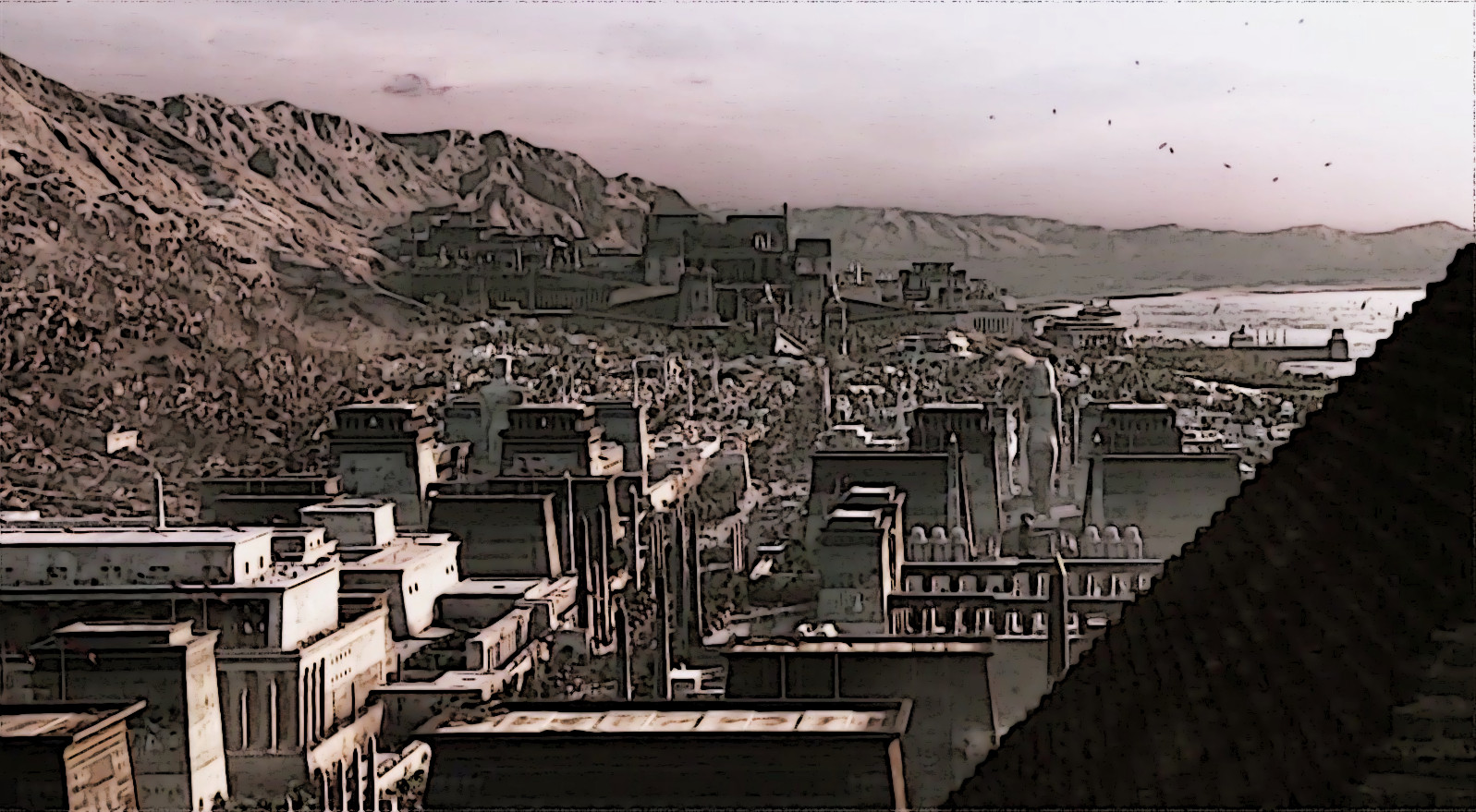
Although the kine lived to serve (and, indeed, often served with their lives), the gratitude bestowed upon them for faithful service were wondrous indeed. From the gods themselves the mortals were taught new and more efficient way to make their living community thrive. Their sovereign lords instructed them, fittingly, on the arts of domestication and husbandry. These techniques were applied to everything possible, and thse ancient Egyptians had soon domesticated wheat, barley, sheep, goats, and cattle. Donkeys were put to use for transport, and pigs were kept in farms outside the city. One god in particular taught his subjects a deep reverence for all animals, and it is believed that from him that they learned to keep them as sacred aspects of the cycle of life. Some animals, such as the greyhound and the cat, were then given to the faithful as companions of their own -- to be taken in to live with them in their homes.
From the other gods, the mortals learned of community, love, early science and design. One game unto them the secret of flax, which was grown, spun into thread and woven into linen for the city's clothing. Another, presumably the designer of their own spectacular palaces, taught the people ways to live more securely, and soon their homes took on and even, rectangular shape, constructed of a much better brick. Another god poured his metalworking genius into their tools, which soon included harpoons, hoes, spindles, looms and drills for hollowing out stone vases. The people's use of flint for blades became more refined, and he assisted them in securing copper and other rare metals of the day. Yet another, one of the most favored among the kine by all accounts, took an active interest in their sense of community and pride. She encouraged recreation time to balance the heavy workload placed upon them, and was the most vocal proponent of leniency whenever transgressions occurred. One of her greatest gifts to them was a powerful oral tradition -- a method by which their songs and stories could live on through the ages -- and the many incarnations of this gift remain to this night.
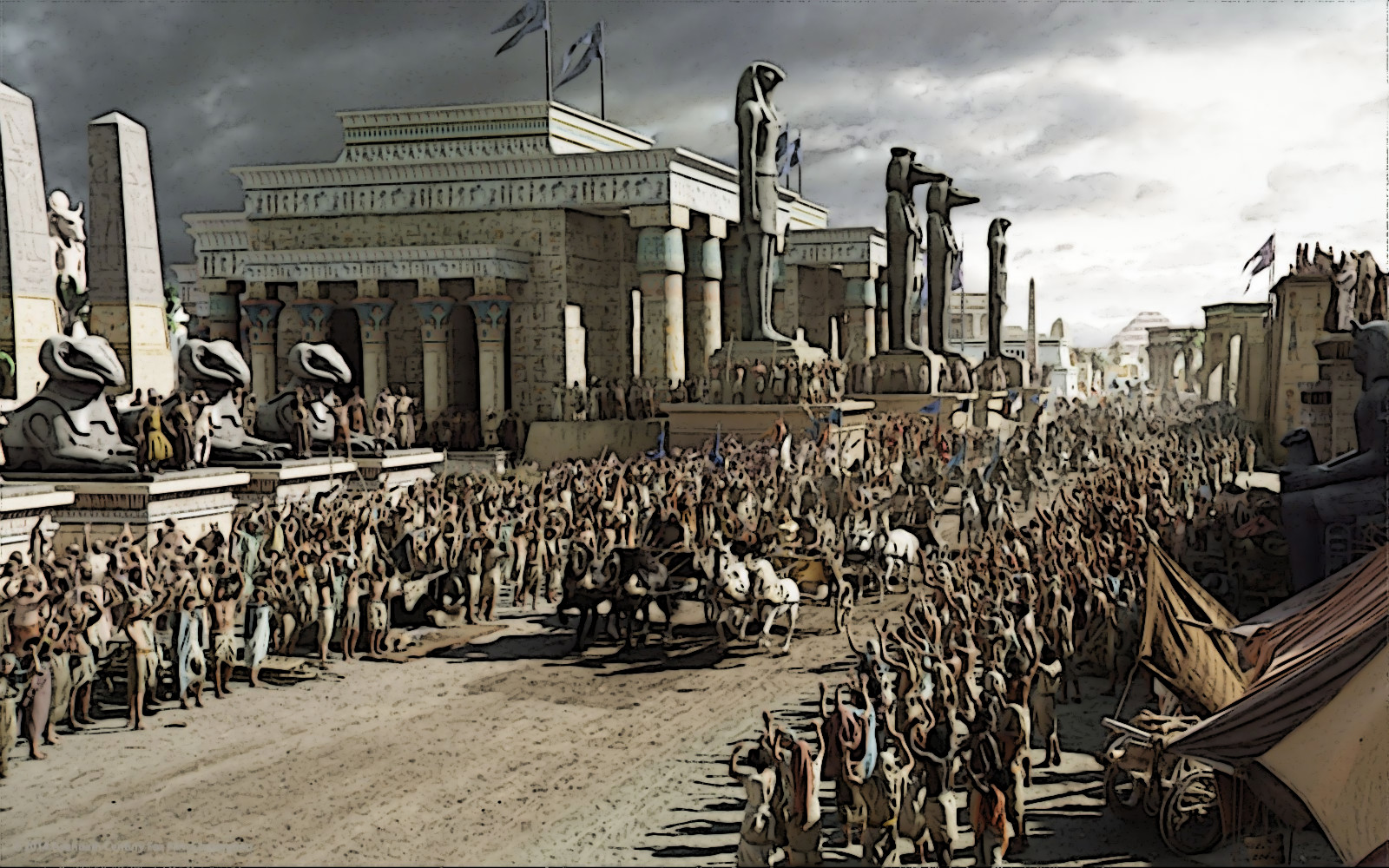
As is also fitting, the gods gave unto their people a deep pandect of beliefs centered upon a strong religion. The dead, they were taught, were seen as holy -- to be treasured and revered by the living. Their were taught to sacrifice of themselves to those who passed on, and they supplied food and other items to the dead in their graves.
They chanted dirges to their fallen loved ones and observed holy days and nights in their names. Reverence for the lords of eternity and the afterlife that awaited them became paramount, and it is from this greatest of traditions that the greatest struggles would arise. This struggle -- would come to be known as the Jyhad.
A Brief History of Egypt
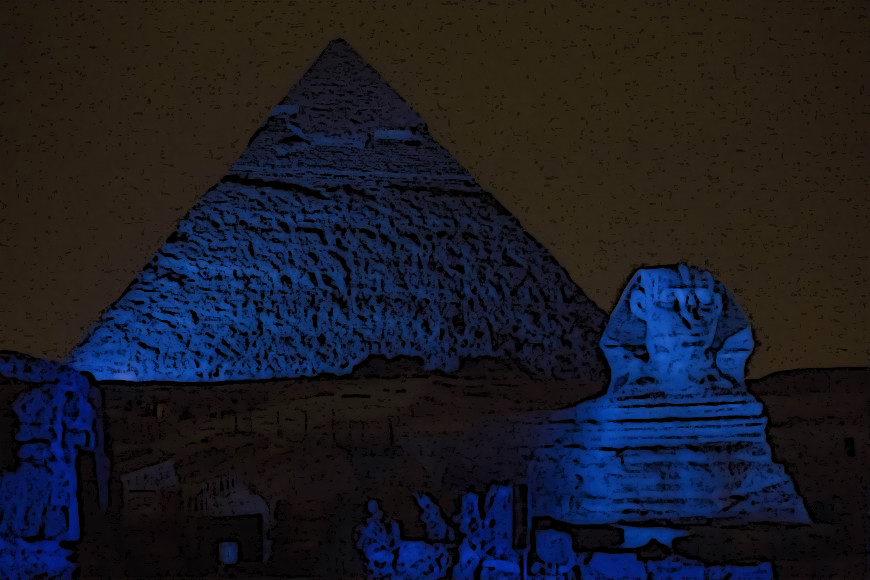
The history of Egypt has been long and rich, due to the flow of the Nile river, with its fertile banks and delta. Its rich history also comes from its native inhabitants and outside influence. Much of Egypt's ancient history was a mystery until the secrets of ancient Egyptian hieroglyphs were deciphered with the discovery and help of the Rosetta Stone. The Great Pyramid of Giza is the only one of the Seven Wonders of the Ancient World still standing. The Lighthouse of Alexandria, one of the other Seven Wonders, is gone. The Library of Alexandria was the only one of its kind for centuries.
Human settlement in Egypt dates back to at least 40,000 BC with Aterian tool manufacturing. Ancient Egyptian civilization coalesced around 3150 BC with the political unification of Upper and Lower Egypt under the first pharaoh of the First Dynasty, Narmer. Predominately native Egyptian rule lasted until the conquering of Egypt by the Achaemenid Persian Empire in the 6th century BC.
In 332 BC, Macedonian ruler Alexander the Great conquered Egypt as he toppled the Achaemenids and established the Hellenistic Ptolemaic Kingdom, whose first ruler was one of Alexander's former generals, Ptolemy I Soter. The Ptolemies had to fight native rebellions and were involved in foreign and civil wars that led to the decline of the kingdom and its final annexation by Rome. The death of Cleopatra ended the nominal independence of Egypt resulting in Egypt becoming one of the provinces of the Roman Empire.
Roman rule in Egypt (including Byzantine) lasted from 30 BC to 641 AD, with a brief Sassanid Persian interlude between 619-629, known as Sasanian Egypt. After the Islamic conquest of Egypt, parts of Egypt became provinces of successive Caliphates and other Muslim dynasties: Rashidun Caliphate (632-661), Umayyad Caliphate (661–750), Abbasid Caliphate (750-909), Fatimid Caliphate (909-1171), Ayyubid Sultanate (1171–1260), and the Mamluk Sultanate of Egypt (1250-1517).
Timeline
• 1st century BCE - Babylon Fortress built (approximate date).
• 4th-5th centuries CE - Saints Sergius and Bacchus Church (Abu Serga) built.
• 6th century - Church of Saint Menas established.
• 642 - Mosque of Amr ibn al-As built.
• 879 - Mosque of Ibn Tulun built.
• Church of St. George built (approximate date).
• Church of the Virgin Mary (Haret Zuweila) built (approximate date).
• 970
- • Misr al-Qahira settlement founded by Fatimid Al-Mu'izz li-Din Allah.
- • Al-Azhar University established.
• 972 - Al-Azhar Mosque established.
• 978 -The Hanging Church rebuilt (approximate date).
• 979 - Saint Mercurius Church in Coptic Cairo rebuilt (approximate date).
• 992 - Al-Hakim Mosque built.
• 11th century - Church of the Holy Virgin (Babylon El-Darag) built.
• 1016 - Lulua Mosque built.
• 1073 - Saint Barbara Church in Coptic Cairo restored.
• 1085 - Juyushi Mosque built.
• 1092 - City wall and Gates of Cairo built (including Bab Zuweila and Bab al-Nasr).
Medieval Cairo
Current Events
Districts of Al-Qāhirah
Babylon Fortress
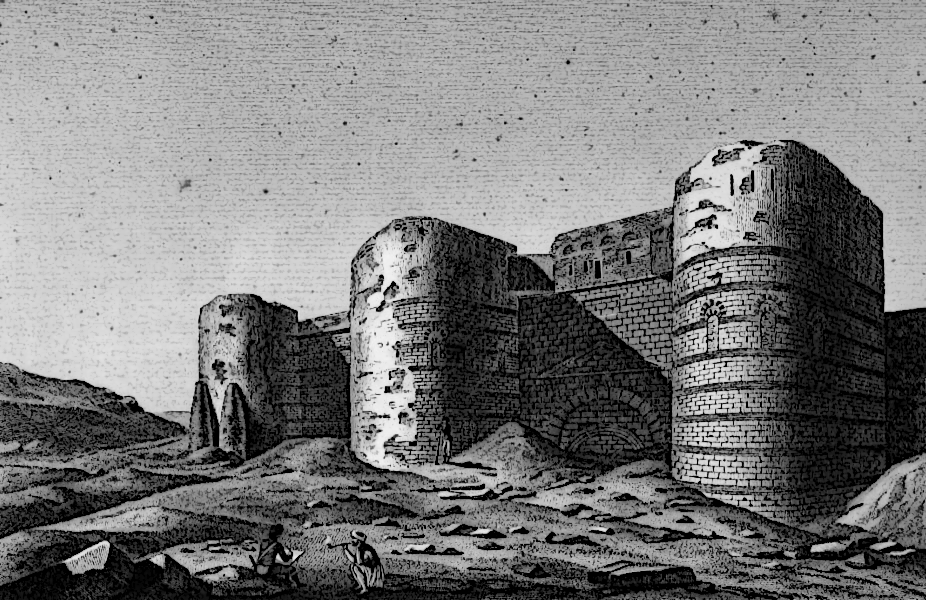
There is evidence of settlement in the area as early as the 6th century BC, when Persians built a fort on the Nile, north of Memphis. The Persians also built a canal from the Nile (at Fustat) to the Red Sea. The Persian settlement was called Babylon, reminiscent of the ancient city along the Euphrates, and it gained importance while the nearby city of Memphis declined, as did Heliopolis. During the Ptolemaic period, Babylon and its people were mostly forgotten.
It is traditionally held that the Holy Family visited the area during the Flight into Egypt, seeking refuge from Herod. Further it is held that Christianity began to spread in Egypt when St. Mark arrived in Alexandria, becoming the first Patriarch, though the religion remained underground during the rule of the Romans. As the local population began to organize towards a revolt, the Romans, recognizing the strategic importance of the region, took over the fort and relocated it nearby as the Babylon Fortress. Trajan reopened the canal to the Red Sea, bringing increased trade, though Egypt remained a backwater as far as the Romans were concerned.
Under the Romans, St. Mark and his successors were able to convert a substantial portion of the population, from pagan beliefs to Christianity. As the Christian communities in Egypt grew, they were subjected to persecution by the Romans, under Emperor Diocletian around 300 AD, and the persecution continued following the Edict of Milan that declared religious toleration. The Coptic Church later separated from the church of the Romans and the Byzantines. Under the rule of Arcadius (395-408), a number of churches were built in Old Cairo.[8] In the early years of Arab rule, the Copts were allowed to build several churches within the old fortress area of Old Cairo.
In the 11th Century AD, Coptic Cairo hosted the Seat of the Coptic Orthodox Pope of Alexandria, which is historically based in Alexandria. As the ruling powers moved from Alexandria to Cairo after the Arab invasion of Egypt during Pope Christodolos's tenure, Cairo became the fixed and official residence of the Coptic Pope at the Hanging Church in Coptic Cairo in 1047.
The Ben Ezra Synagogue was established in Coptic Cairo in 1115, in what was previously a Coptic church that was built in the 8th century. The Copts needed to sell it, in order to raise funds to pay taxes to Ibn Tulun.
Important Sites of the Fortress of Babylon
- -- The Hanging Church -- Home to the Coptic Patriarch.
- -- Church of St. George in Cairo
- -- Coptic Orthodox Church of St. Barbara (or Sitt Barbara)
- -- Saints Sergius and Bacchus Church (AKA: Abu Serga)
- -- Saint Mercurius Church in Coptic Cairo
- -- Coptic Orthodox Church of Saint Menas (kenīset Mar-Mīna)
- -- Church of the Holy Virgin (AKA: Babylon El-Darag)
- -- Ben Ezra Synagogue
Rhoda Island
Al-Fustat
Al-Askar
Al-Qata'i
Al-Qāhirah
Population
- Annual Census, 1100 A.D.:
Cemeteries
The Cities of the Dead
Citizens of the City
Cairo is a city of communities. The city's residents both mortal and Kindred, often band together to accomplish individual and common goals, and the vampire who walks the streets of Cairo alone may well find herself at a distinct disadvantage. Within these assemblies lie various subsects, heresies and and fringe groups, and, when inspected in depth, their relations with one another can seem somewhat convoluted. To outsiders and those encountering them for the first time, their ancient and often traditional dealings with one another can appear peculiar, insular or unfamiliar.
Clergy
Craftsmen
Criminals
- -- Qadir Ali -- Experienced Smuggler
Fortifications
Holy Ground
Churches
Convents
Mosques
Inns
Law & Lawlessness
Monuments
Arches (Triumphal)
Bridges
Columns
Fountains
Gates
Mausolea
Statues
Tombs
Private Residences
Taverns
Temples
Visitors
Whore Houses
Dead Among the Dead -- The Damned of Cairo (القتلى من بين الأموات - وملعون من القاهرة)
Banu Yashkur (سبط هيل) -- Assamites of Egypt
- -- Antara -- The Shepherd of Wolves
Banu Ahl ar-Raya (قبيلة من رمال الزمن) -- The Cold Brujah
- -- Al-Muntaqim - The Avenger
- -- Al-Muntathir - God's Witness
Qabilat Al-Mawt (قبيلة الموت) -- The Cappadocians of Cairo
Banu al as-Sa'idi (قبيلة من المصلين الثعبان) -- Followers of Set
- -- Bilaal the Guide -- Setite Entrepreneur
- -- Kahina -- Kahina is a powerful Setite Sorceress and one of the two heads of the Dream Court.
- -- Bek -- The Spice Merchant
Banu al - Lam'a (قبيلة من الليل) -- Lasombra
- -- Sharif Al-Lam'a -- Monarch of the Light
- -- Fatimah Al-Lam'a -- Pious Princess
- -- Suleiman ibn Abdullah -- Mullah of the Ashirra
Banu al - Hajji (سبط حجي) -- Muslim Nosferatu
- -- Wahid Al-Mufti -- The Sacred Legalist
- -- Fahim Hussain -- Scholar of Prophesy
- -- Tayyib -- The Good Samaritan
- -- Zaahir Najm -- The Hallowed One
Ventrue: Antonii cum Sanguine
- -- Antonius of Cairo -- Sultan of the City Victorious
Laibon (أبو الهول) -- The Sphinx of Cairo
- -- Jubal -- Advisor to the Sultan
Cainites of Lesser Blood
Shadows in Dust -- The Hidden Host
- -- Angelique -- Guardian of the Necropoli.
- -- [[]] --
- -- Maiden of Plagues -- The mysterious Sleeping Lord of the Cairene Court of Dreams.
- -- [[]] --
- -- [[]] --
Websites
